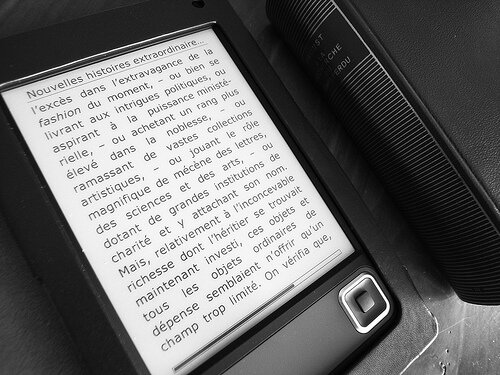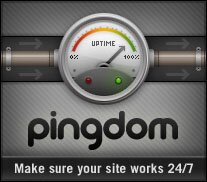How To Create E-Books That Sell

Image via
E-books are very popular on the web. No running to Barnes and Noble. No waiting for a shipment from Amazon. You pay your money, click and that book is on your hard drive ready to be read for fun or profit (mostly profit, from what I can tell).
Anyway, e-books are also used as FREE give-aways. In these cases, the recipient has to provide an e-mail address, knowing that an endless barrage of auto-responders will follow once you’ve captured the e-mail address. Even so, they’ll put up with the back sell and take a chance that the e-book is worth the hassle.
Whether you sell an e-book or give it away as opt-in bait, all e-books are based on certain publishing principles. That’s right. When you offer a download, you’re a publisher in the Digital Age. So make that e-book make sense.
1. Value is NOT measured in poundage.
Some e-book sellers believe that a 250-page e-book is more valuable than a 50-page e-book based on buyer’s perception. That 250-page e-book delivers 500% more information than the puny 50-pager, right?
Wrong, wrong, wrong. I’d rather pay for (or sacrifice my e-mail privacy) for a 50-page book stuffed with tons of good, actionable advice than plow through some wind bag’s opinion on how to start a business.
Less is more in e-book publishing. Do you want to print out a 250 page book? I don’t. And I don’t want to read the darn thing on my computer screen (even though it’s a really cool 17-inch hi-def model). I’m stuck here reading your e-book.
My recommendation: if you can’t say everything that has to be said in 50 pages, you’re trying to say too much.
2. Start by creating the Table of Contents (TOC)
Most first-time e-book writers spend hours preparing outlines with circles and arrows and high-lights. Why?
Instead, put together the e-book’s TOC. What needs to be said in chapter one? And how do you build on that in chapter three, four and five? Each chapter should build on the chapters that came before. You don’t have to keep defining EMFs (electro-magnetic fields) in your “tell-all” on how “Cell Phones Are Killing Us.” Define EMF in Chapter one and build on that.
3. Take the TOC and list topics, in sequence, within each chapter.
Get it. You’re building the content architecture – the book’s outline – and it didn’t even hurt.
4. Start writing.
Let me give you a few separate tips related to the process of writing an e-book:
* set a goal for each day. Five good pages shouldn’t be too hard.
* stick to the content outline
* stay on point
* be clear. You may understand what financial derivatives are but your reader may not. Know your reader’s skill set.
* use clip art to add some visual appeal.
* Bullet lists, charts and graphs and other “visual aids” are extremely useful in conveying a lot of information in a short time. I could send you 63 pages on the company financials over the last year, or I could create a pie chart of that same data. Which is easier to absorb?
* No puff. No fluff. No marketing. No up sell. Solid informational content. That’s what buyers want. That’s what they paid for.
5. A book becomes great in editing.
Editing is boring. Even most editors find it strenuous, monotonous and fatiguing. But this is the stage where you turn your rough text into gleaming pearls of wisdom.
That means reading, re-reading, and re-reading again. Each time, you’ll find something to change. Better sentence construction or information flow. Chapter 7 may become Chapter 3, or cut altogether. It’s at this phase that the e-book takes its final form.
But you’re still not done yet.
6. Word edit.
Okay, the content is in place. It follows a logical order. It builds on what came before. You’re close, but you aren’t there just yet. Time to read the text with an eyeball on making it read better. Make it more precise, humorous, clearer, change sentence structure (btw, if you don’t know what parallel sentence construction is, get a book and get caught up on all that 8th grade English stuff you’ve long since forgotten).
Mark Twain, America’s first 100% American author once said, “The difference between the exact right word and the almost right word is the difference between lightening and a lightning bug.”
Each word should compel the reader to keep reading and keep discovering the secrets you reveal about the dry cleaning business – or whatever the topic of the e-book.
7. Proof your text.
I find it impossible to proof my own words. I wrote them that way in the first place so I, inherently, believe they’re perfect – even if there’s a typo here and there.
That’s why I ask others to proof my e-books. I pay them for their time, but if a couple of proofreaders find spelling mistakes or inconsistencies in formatting, it’s money well spent.
8. Get the biggest (Click)bank for your buck.
Sure, sell or give-away the e-book on your own web site, but open an account at clickbank.com and upload your masterpiece. Select strong keywords – the same ones used to optimize your site.
Writers love Clickbank. Once they’re up and running, web site owners and just plain folks download their e-books for a price. Authors get to set the price ( most tend to keep it low to see more volume) and the nice folks at Clickbank deposit their earnings directly into their bank accounts. Too cool. Totally passive income.
So, you have direct sales and sales through Clickbank. That’s more revenues in your pocket.
9. Choose topics with legs.
If you write an e-book on current events, it’s out of date in about an hour-and-a-half.
Stick with topics that will interest buyers today, tomorrow and 20 years from now so you keep earning from work you did last millennium.
10. The Three Topics All Readers Will Buy
Family, health and finance.
And, if you can combine two of these topics, you’ve got a winner. “Building Your Child’s College Fund” has finance and family appeal.
Also, target the needs-driven buyer – the one who needs good, solid, reliable information like NOW. A guy who’s facing foreclosure in 72 hours is a needs-driven buyer for your “How to Stop Foreclosure Even If The Sherriff Nailed The Auction Notice To Your Front Door.”Okay, a little long, but someone facing foreclosure in a few days or weeks will pay $59.95 for a download that can prevent immediate foreclosure.
But the e-book has a responsibility to deliver the goods – to solve the problems of that needs-driven buyer. “How to Find a Job In a Shrinking Economy,” Easing Into Retirement,” “Finding the Perfect Mate.”
Family, finance and health – the three topics about which any reader will read.
Using e-books as opt-in bait, or as a source of revenue is a common practice on the web. Unfortunately, much of this so-called information is stuffed with fluff. Scams.
Make your e-books deep in value, deep in practical, actionable information and buyers will be glad that you spent the time to write such an entertaining, informative e-book.
And you’ll generate revenues. Awesome.



: Yeah, you can see it anywhere, they are just recycling the same method over and over again…
thank u
i will make ebook according to your learning
i also use clickbank on our websites and we earn a lot from this ppc program-`:
Clickbank pays really well and i love making money from it.`.